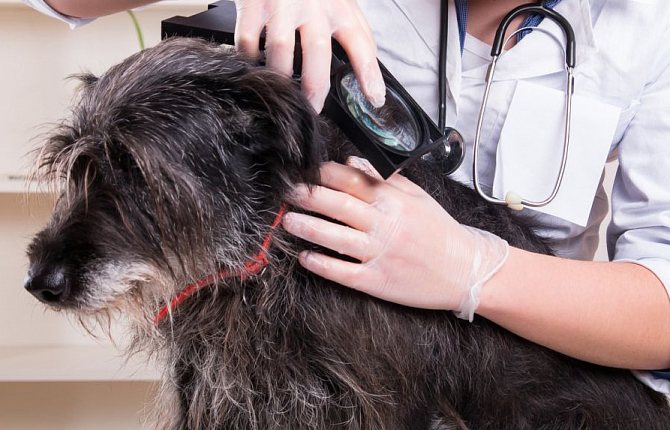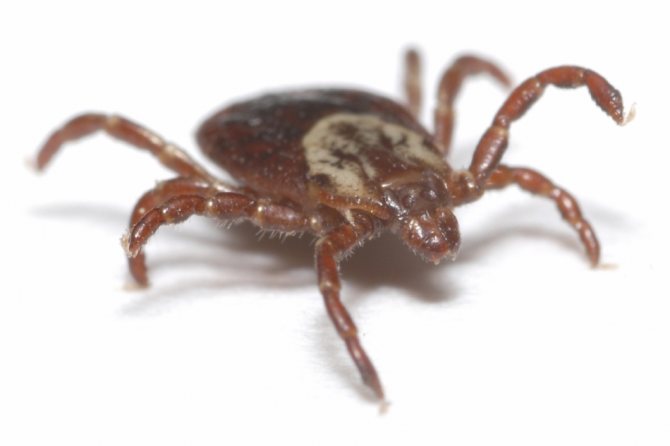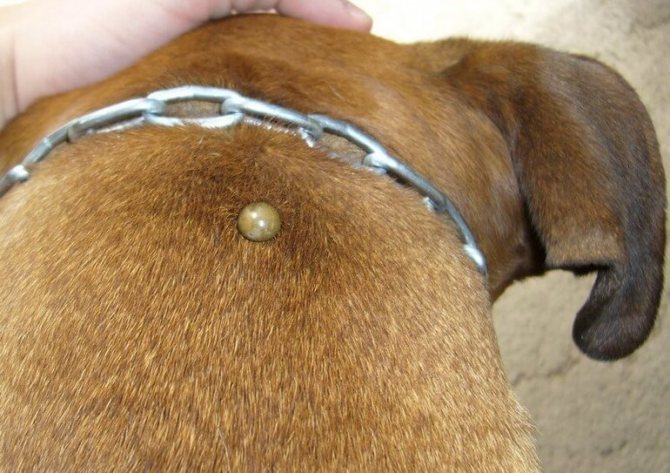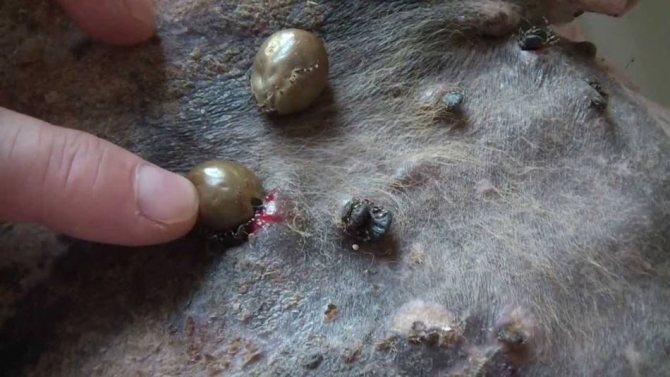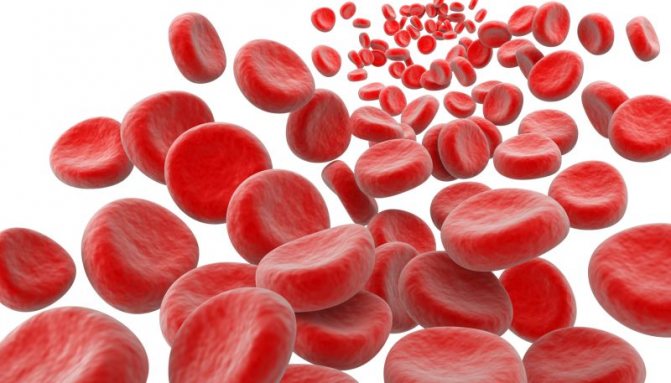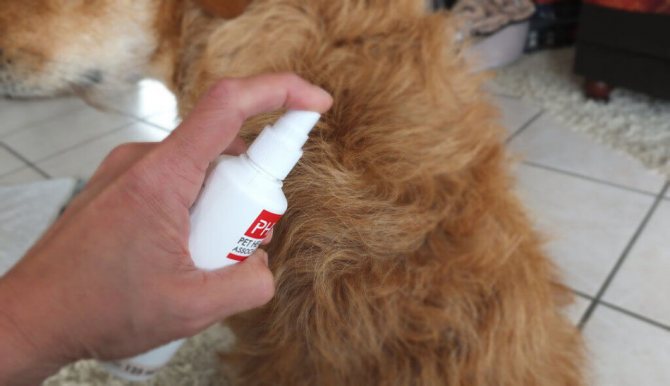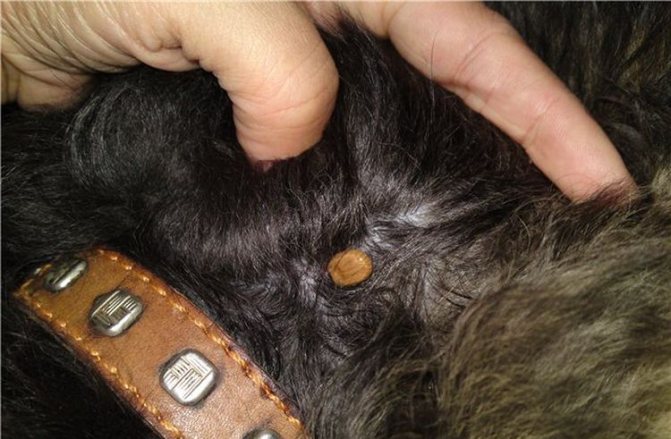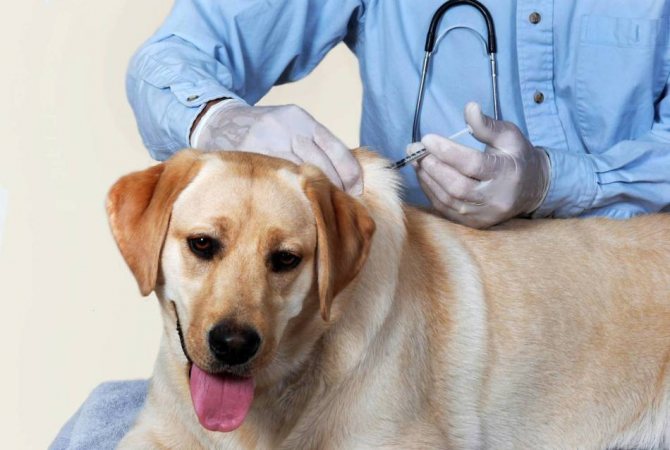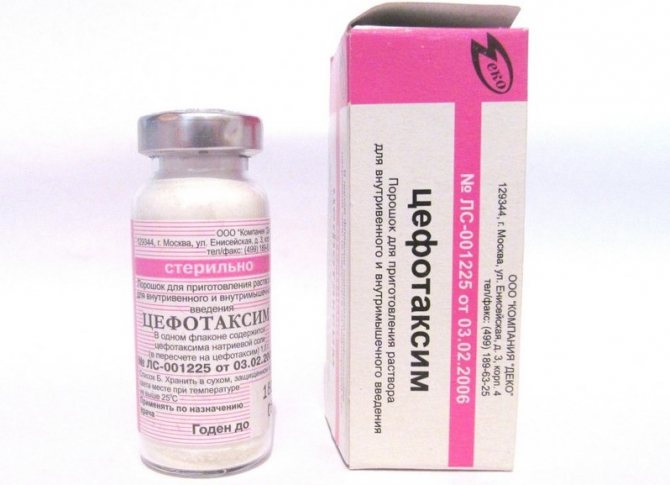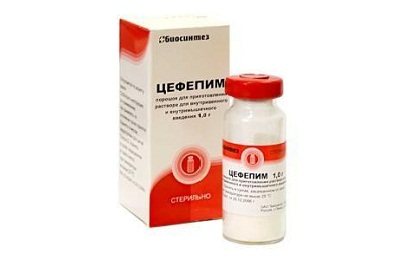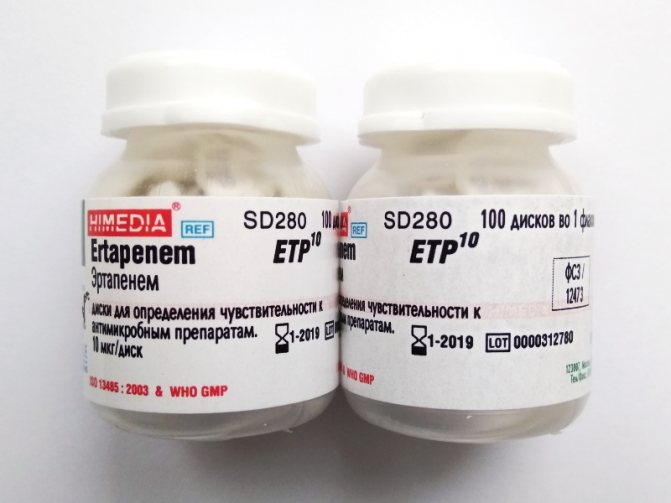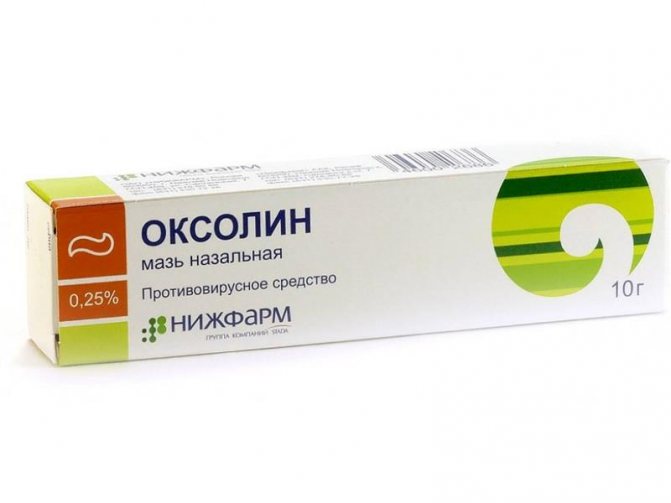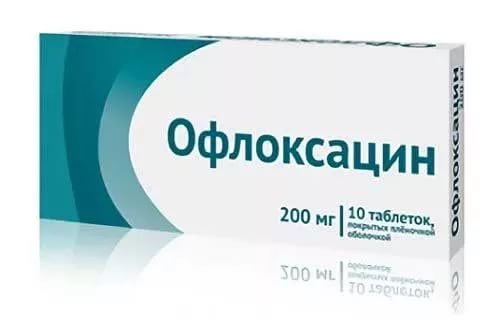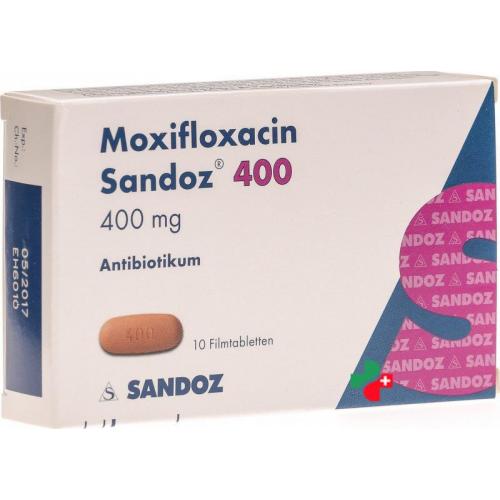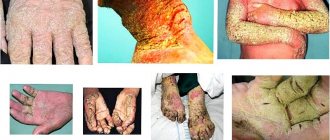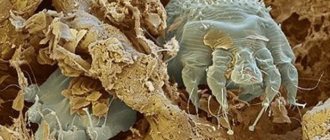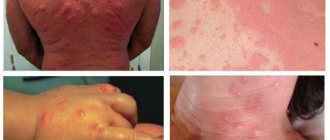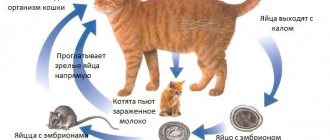Nowadays, on almost every corner of us and our pets are in danger
... They are expressed in the possibility of becoming a victim of any ailment. In this article, we will talk about encephalitis caused by a tick bite.
Mite, as we know, lives in the grass. Our pets in this case, like no one else, has an increased risk of picking up tick-borne encephalitis in dogs... Someone walks with their pets in the park, someone takes to hunt, someone introduces the animal to rural activities and she grazes the cows. In each of the listed places, wherever the dog is, there may be a tick. May and June are the most dangerous months
when the number of infected increases.
Tick bite dangerous transmission of encephalitis to the pet. In this article, we will look at the reasons, symptoms and applied treatment methods tick-borne encephalitis in dogs.
Features of the course of the disease
Dog encephalitis refers to a severe inflammatory process in the lining of the brain and spinal cord. The initial form of the disorder manifests itself after infection, with subsequent progressive symptoms.
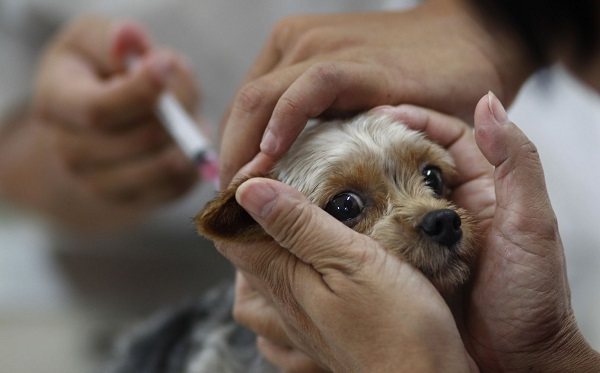
The greatest danger of encephalitis is in the second stage.
The secondary form arises as a result of a complication after the neglected first stage, when the virus actively penetrates into all organs and tissues of the pet, eventually entering the brain and inhibiting its activity.
Veterinarians distinguish several types of encephalitis:
- Meningoencephalitis manifested by symptoms that are localized in the brain and its membranes;
- When there is encephalomyelitis damage occurs in the pet's brain and spinal cord;
- Meningoencephalomyelitis characterized by the manifestation of the inflammatory process simultaneously in the membranes and mucous tissues of the brain and spinal cord.


Dachshunds and Yorkshire Terriers are prone to encephalitis
There are risk groups of animals that are susceptible to this violation. These are animals in old age, young animals, pets with craniocerebral injuries, dogs after suffering severe forms of infectious diseases, as well as some breeds, for example, dachshunds and Yorkshires.
Attention! If tick-borne encephalitis in dogs occurs in a latent form, then in a short time it can be fatal. Only timely diagnosis and preliminary vaccination can stop the progression of the disease.
Where is the best place to do it?
Caring dog breeders are wondering where it is best to treat their pet: at home or in the clinic. It is worth noting that inflammation of the lining of the brain is a serious disease that can cause a number of negative consequences. It is very important to track each stage of treatment and its effectiveness. It is not recommended to transport the patient over long distances. The best option is to find an institution with the possibility of 24-hour hospitalization.


Tick-borne encephalitis in dogs
Parasites actively attack animals, especially in the warm season. When bitten, a virus is injected into the pet's body, and then infected blood is spread throughout the body, right down to the brain.
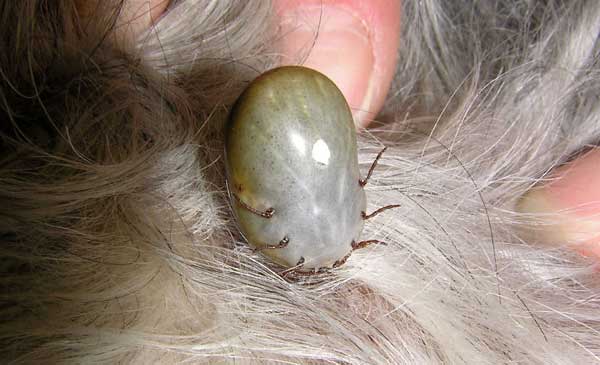

Tick penetration through the dog's fur
Most often, such parts of the dog's body are exposed to the bite as the neck, ear cavities, abdomen, armpits, and the inner thigh. Ticks suck in blood, after which they release waste - infectious plasma.
After this, a latent period of the course of the disease begins, which most often manifests itself in symptoms that are invisible to a person. If the animal's immunity is normal, then there is a slight malaise, thoughtfulness, calmness of the pet. The phase of manifestation of signs of encephalitis is delayed.
The primary form of the disease lasts from 20 hours to 2 weeks, during which time it is very difficult to track and diagnose.
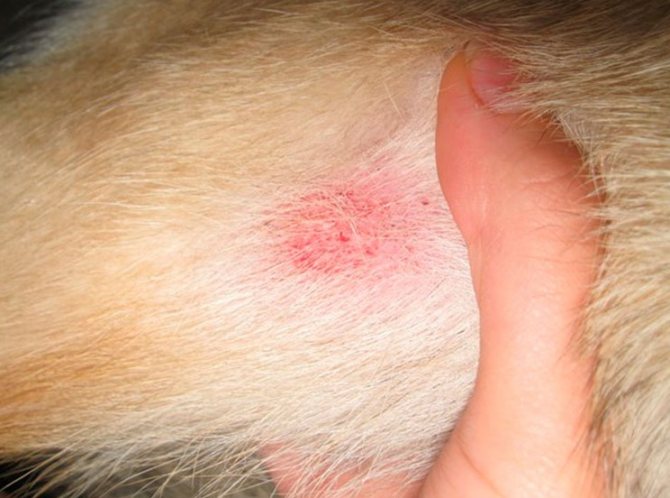

The consequences of a tick bite
Over time, the disease progresses. More pronounced symptoms of tick-borne encephalitis in dogs appear:
- the animal's condition worsens - depression appears, apathy to what is happening (lasts about 2 days);
- the body temperature rises to 40 degrees (many owners accept such signs as a consequence of sunstroke);
- there is a complete refusal of food;
- the animal's gait becomes clumsy, wobbly;
- the nervous system is disturbed - tremor of the limbs, pupils increase, involuntary twitching of the facial nerve occurs;
- when emptying the intestines, bloody impurities are noticeable in the feces, and the urine is painted over in a brown, greenish color.


The first alarming symptoms of encephalitis are lethargy, indifference to people and apathy.
With a timely visit to the doctor, the treatment process takes several days, followed by rehabilitation therapy. In an advanced case, the recovery period is extended to a month, with possible irreversible consequences for the pet.
On a note! The first signs that should alert dog owners are a loss of interest in toys, finding a pet in one position for a long time, and a lack of reaction to people.
What can provoke encephalitis in a dog?
The causes of the encephalitis process are due to the ingestion of an infection of a different nature into the animal's body. The causative agents can be specific viruses - parvovirus, rabies, plague, herpes. Mycoses, migration of parasites and foreign bodies - a piece of a plant, a tendril of a spikelet.
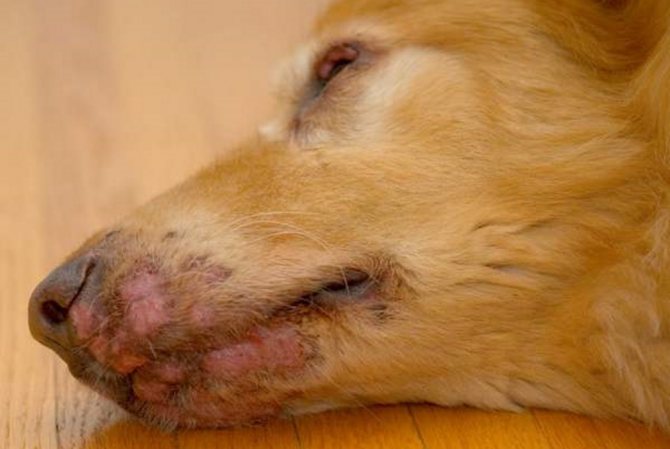

Seemingly harmless herpes can lead to dangerous infectious diseases
The causes of secondary encephalitis are ear inflammatory diseases in an advanced stage, craniocerebral trauma, sepsis, as a consequence of a secondary inflammatory disorder (against the background of weakened immunity after prolonged treatment).
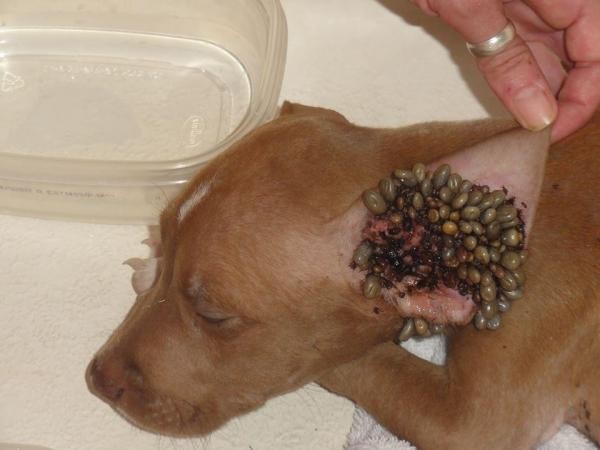

Ear diseases can provoke the rapid multiplication of ticks
If the animal has worms, then there is a fear that during migration they are able to penetrate the cranium of the brain, causing disruptions in the functioning of the organ. Immunity cannot cope with the infection on its own without attacking the central nervous system, causing a deterioration in the pet's well-being. With this development, the death of the animal occurs in 60% of cases.
Are there any preventive measures?
Dogs suffer from encephalitis very acutely. They practically do not eat, they constantly whine and lead a sedentary lifestyle. It is unlikely that a caring owner would want his animal to suffer so much. There are a number of preventive measures that can help prevent the development of this disease.
- It is recommended to put a special flea collar around the animal's neck. It has a specific odor that repels parasites.
- You should carefully study the risk group and determine if your dog's breed falls into it. If she is there, then she needs careful monitoring. Once every three months, it is necessary to undergo a comprehensive examination in a specialized clinic.
- One of the most common causes of inflammation is prior trauma.It is required to observe the behavior of the animal and prevent the occurrence of traumatic situations.
- If the disease has a secondary form, then, most likely, it appeared due to a serious disease of the middle ear. It is required to examine the auricle several times a month.
- In time, you need to do the necessary vaccinations, which will create a barrier that prevents infection from entering the body.
Unfortunately, a sufficiently effective prophylactic vaccine has not yet been developed against tick-borne encephalitis. Therefore, you need to actively use special collars and drops on the withers.
Diagnostics
If the symptoms of the disease during a tick bite were not visually detected, but the fact of the bite was recorded, then a blood sample and a laboratory urine test are done to confirm the diagnosis.
If you suspect encephalitis, you will need:
- X-ray of the cerebral cortex;
- contrast radiography;
- examination of cerebrospinal fluid.
When conducting magnetic resonance therapy, it will be possible to fix areas of brain damage.
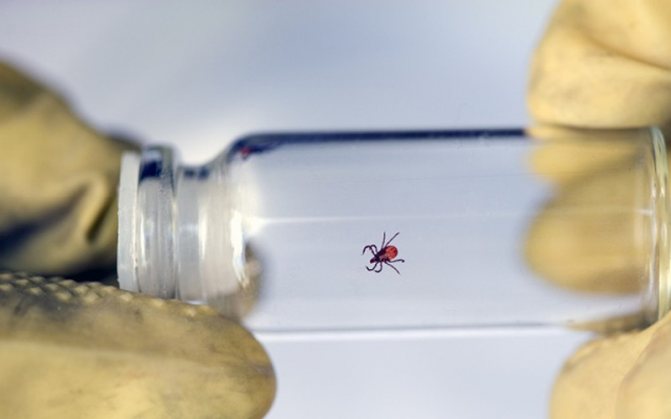

The tick obtained from the dog must be saved for laboratory analysis.
When self-removing the parasite from the pet's skin, it is recommended to deliver the parasite to the laboratory - place it in a glass jar and seal it with a lid to avoid crushing the bloodsucker.
Treatment of the disease
If an infection has occurred from a tick bite, then the first step is to contact the veterinary center and examine the animal. Based on the diagnostic measures, the specialist will prescribe a course of treatment and rehabilitation of the pet.
Attention! Infected plasma rapidly spreads through the organs and systems of the animal. Thanks to timely treatment, it will be possible to eliminate the infection at the initial stage and avoid serious consequences.


The type of drug treatment depends on the disease that caused the encephalitis.
Depending on the pathogen, a course of antifungal, antibacterial, anthelmintic agents, together with glucocorticosteroid hormones, aminoglycosides, and so on, will be required.
To begin with, you will need drugs to activate the pet's reflex actions and excite the nervous system, so that the dog can adequately respond to what is happening, to restore motor activity.
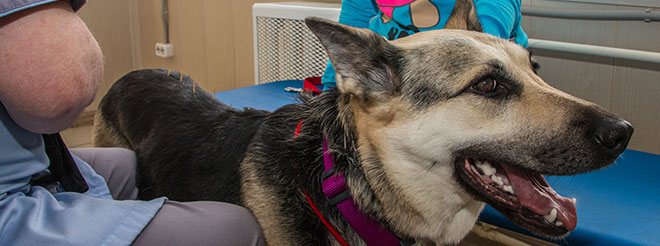

Acupuncture is used to restore the reflex arc.
In advanced cases, acupuncture, massage of the extremities, physiotherapy effects on the surface tissues and mucous membranes of the pet are prescribed.
When treating with antibiotics, drugs with pronounced bactericidal properties and low toxicity are used, due to the weakened immunity of the animal.
Table 1. Groups of antibiotics suppressing encephalitis
| Drug class | Drug name | Composition / action | Appointment |
| Cephalosporins |
Cefotaxime Cefuroxime
Cefepim | A group of antibiotics with 7-aminocephalosporic acid, characterized by a wide spectrum of action, have high antistaphylococcal activity | Injections are administered intravenously, 2 times a day at 40-50 mg / kg |
| Carbapenems | Meropenem
Ertapenem | The group of antibiotics beta-lactams, with a wide spectrum of antimicrobial activity, bind protein compounds of the cell wall, inhibit the process of bacterial reproduction in the body | Injections are administered intravenously, 2 times a day at 40-50 mg / kg. The dosage can be increased to 60 mg / kg pet |
| Fluoroquinolones |
Oxolinic ointment
Ofloxacin
Moxifloxacin | A group of antibiotics with a pronounced antimicrobial activity, the drug does not accumulate in the blood and tissues, it is used for local administration in the form of eye and ear drops | Individual dosage according to the drug release form (solution, ointment, drops) |
Additionally, the blood and urine are purified from the virus (saline, diuretics), without additional stress on the kidneys, liver and genitourinary system.
Publicly available drugs that can be purchased at veterinary points in order to destroy the infection after a tick bite are Piro-stop, Fortikarb, Pirosan, Veriben, Azidin-Vet. It is important to support the pet's body with hepatoprotective agents and heart medications.
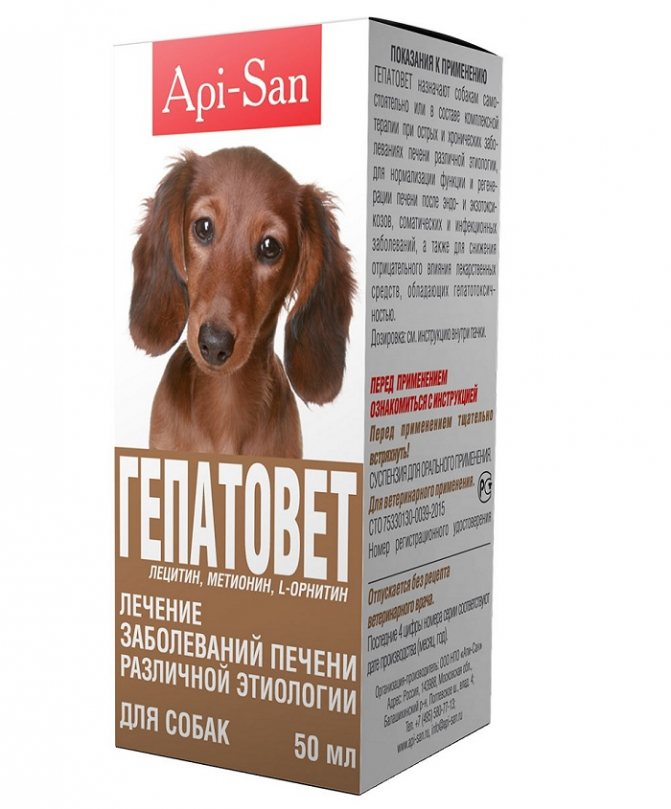

Hepatovet contributes to the normalization of the dog's liver
You will also need drugs to normalize intracranial pressure - Diacarb, Mannitol, depending on the progression of the symptoms of the disease. With the help of these funds, it will be possible to eliminate edema after encephalitis. But the use of magnesium sulfate is not recommended, in order to avoid a heart attack and further death.
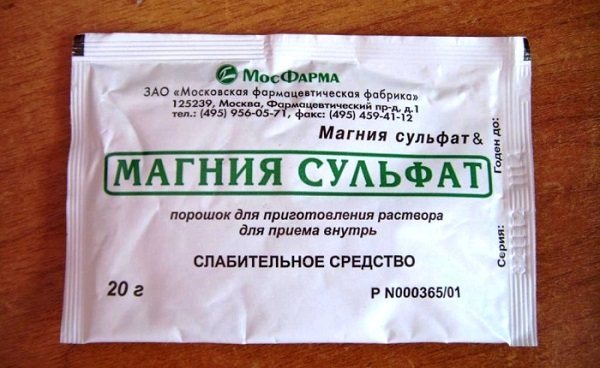

By contributing to the normalization of metabolism, magnesium sulfate can cause a heart attack in an infected animal
When treating encephalitis, it is forbidden to use immunostimulants that can have an irreversible effect on the animal's body, activating antibodies and destroying the central nervous system.
On a note! Such therapy will be required at the stage of recovery of the pet, after the complete completion of treatment (elimination of the infection).
If other diseases additionally appear - irritation, dryness, peeling of the skin, then you can use natural oils, creams, ointments, shampoos to moisturize the damaged areas.


Protein-rich meat, dairy products, eggs will help diversify your pet's diet.
In the process of animal recovery, a high-protein diet is prescribed to fill the organs and systems with the necessary useful vitamins and microelements (the protein content in the animal's feed should be at least 40%).
You need to treat a dog wisely, under the close supervision of a veterinarian. Self-medication of a pet can lead to irreversible consequences and serious complications.
Effects of tick-borne encephalitis in dogs
Encephalitis, even at the initial stage, can cause disturbances in the work of many systems and organs. Against the background of infection, immunity is significantly reduced, there is a high risk of secondary manifestations of the disease.


Timely cleaning of the dog's body from toxins will help to avoid the second stage of encephalitis.
It is important at the rehabilitation stage to completely cleanse the circulatory system, which will have a beneficial effect on the pet's well-being.
If you do not take the necessary measures to eliminate the infection from the animal's body, then the following consequences may occur:
- the load on the kidneys and liver is rapidly increasing - due to the accumulation of a large amount of fluid in the body (due to renal failure, food is not fully digested, additional toxicity of the body occurs); You can read more about the symptoms of liver disease on our portal.
- the infection enters the bloodstream, contaminating the plasma;
- the level of hemoglobin in the blood decreases, oxygen starvation occurs, which is manifested by dysfunction of the heart;
- with the appearance of cerebral edema, the death of the pet occurs.
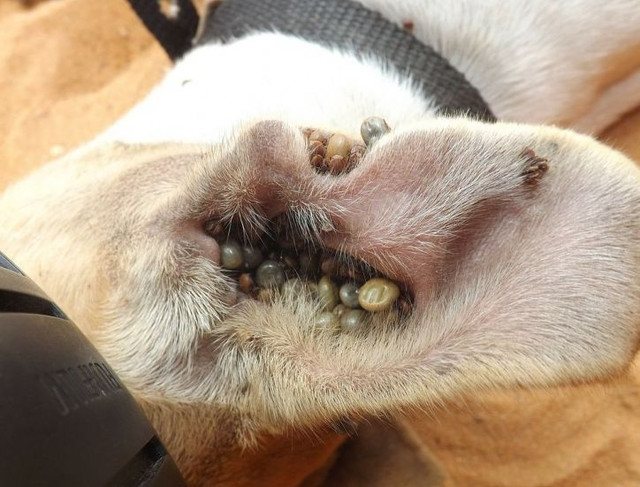

Symptoms of Piroplasmosis in Dogs
Encephalitis in dogs can result from piroplasmosis, which has a similar clinical picture. CNS disorders are visually manifested in a short time - from 2 to 5 days. An acute reaction of the body to infection occurs. Euthanasia is recommended in 70% of cases.
The first steps when an animal bites
Every dog owner should know what urgent actions to take in case of a dog bite with a tick to avoid further infection of the animal and person:
- Remove the parasite quickly with tweezers. It is important not to leave the mouth of the insect in the pet's body;
- Wipe the tweezers with a cotton swab dipped in an alcohol solution, grab the tick's head closer to the skin and remove the parasite from the body with scrolling movements;
- Disinfect the bite site with iodine or brilliant green;
- Seek help from your veterinarian immediately;
- Place the tick in a jar and fill it with alcohol (send it to the laboratory or seal the container tightly and throw it into the trash can);
- Monitor your pet closely for the first 24 hours after being bitten.
After walking through the forest, you need to look not only at the pet's body, but also pay attention to the bites on your own skin. A tick bite can easily be confused with a mosquito.


You should be especially careful when examining long-haired dogs.
If the pet's well-being has worsened - a rash has appeared, a red spot has formed at the site of the wound, swelling has appeared, body aches, the temperature has risen to 38-39 degrees, then an urgent need to consult a doctor. Delay is fraught with serious consequences.
How to remove a tick at home
You can extract the "vampire" yourself. Unscrew it counterclockwise like a bolt. The capture is made as close to the victim's body as possible. It is extremely important not to tear the body of the insect from the proboscis and mouth apparatus. Do not pull or try to pull out the tick with a sharp jerk, in this case, parts of the insect will remain in the body. This will lead to inflammation, suppuration and abscess.
1 tip - pharmacy tweezers
You can use special tweezers (sold at the pharmacy). They have bent ends and allow you to unscrew the insect with high quality, without breaking.
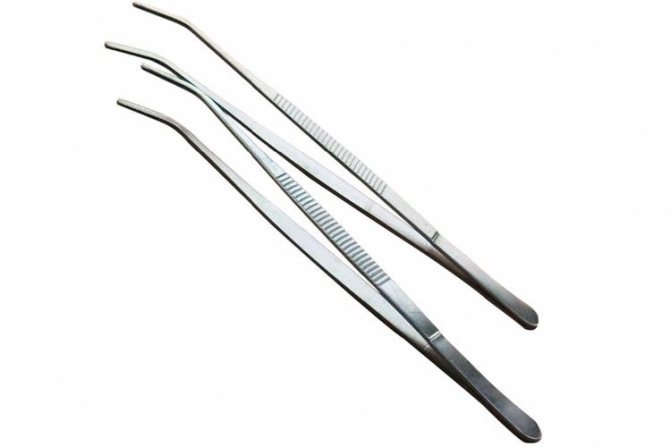

2 tip - tweezers
Take a cosmetic tweezers and work with it like a pharmacy tweezers. The tweezers have a different configuration and with awkward movement they can tear the body of the parasite from the mouth.


3 tip - "Lasso" from a strong thread
Take a strong, silky thread and form a lasso loop in the center. Throw it over the bloodsucker and fix it. Then pull the left and right ends of the thread alternately, thereby loosening the insect.
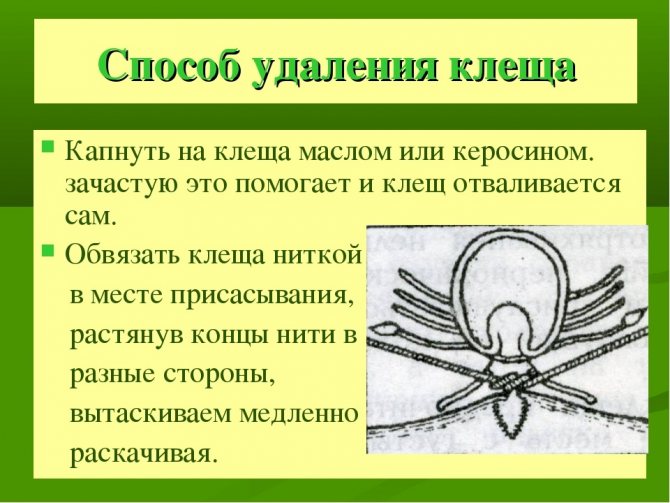

4 tip - manual removal
The parasite can be removed with a finger grip. Grab the insect's body firmly with your thumb and forefinger and twist it in 2-3 turns.
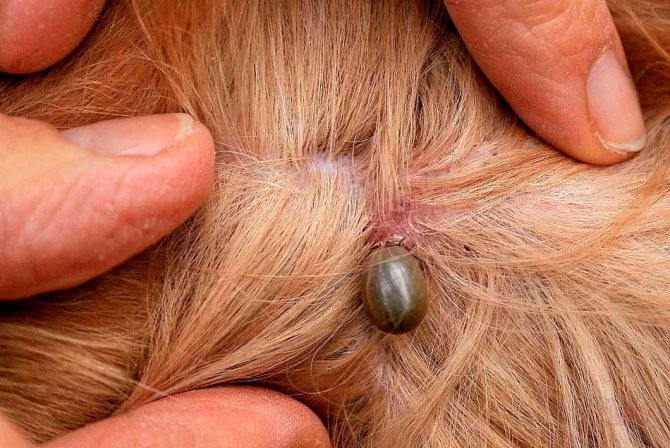

5 tip - syringe
You should always have an insulin syringe close at hand. Cut the tip with a knife. Apply the cut-off syringe to the "vampire" and, pulling back the plunger, try to reach the insect. The method is suitable if it has not yet managed to penetrate deeply into the skin.
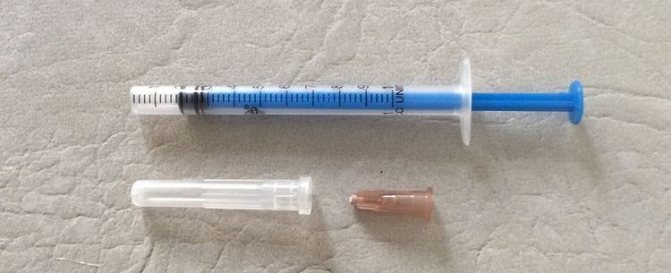

Other tick-borne diseases
A tick bite is dangerous because it is not immediately determined, during the first day, an infection enters the bloodstream and is transported throughout the body. As a result, diseases such as:
- Piroplasmosis is a seasonal disease caused by tick bites. It is manifested by an increase in temperature up to 41 degrees, apathy, urination with blood, weakness of the muscular apparatus. The infection period lasts up to 2.5 weeks.
- Chronic piroplasmosis - as the second stage of encephalitis, is observed in animals with strong immunity, the signs are not differentiated. The period of spread of infection throughout the body is delayed. The clinical picture is visually manifested after the weakening of the pet's immunity.
- Ehrlichiosis - caused by a bite of a dog brown tick, clinical signs may appear 2 months after infection. On examination, hemorrhages on the mucous membranes are diagnosed.
- Anaplasmosis - characterized by rapid weight loss of the pet, disruption of the digestive tract. When a tick bites, platelets are affected. Often the disease proceeds in a chronic form, which leads to the start of the disease and its difficult elimination.


With a sensitive attitude towards the pet, many serious consequences of infectious diseases can be avoided.
Encephalitis in dogs is a serious disease of an infectious nature that can lead to irreversible consequences in the health of a pet.It is important to follow preventive measures and not ignore the symptoms of a deterioration in the well-being of your pet.
Encephalitis mite
The tick is a parasitic insect, small, arachnid, has 8 legs. Females are larger than males. The head is missing. The oral apparatus is 1 mm, is an extension of the trunk. When they are full, they naturally disappear. They are carriers of dangerous infections:
- encephalitis;
- borreliosis;
- piroplasmosis.
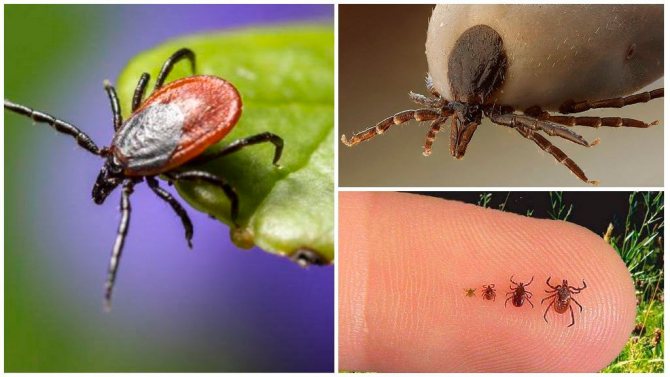

Piroplasmosis is defined by veterinarians as tick-borne encephalitis. Piroplasmas (protozoa viral organisms) enter the bloodstream with the saliva of the insect that is the carrier of this disease. They are passed from generation to generation in ticks. If the female or male was carriers of piroplasmosis, the nymphs will also be infected. In this regard, the pathogen persists for a long time in a certain area.



